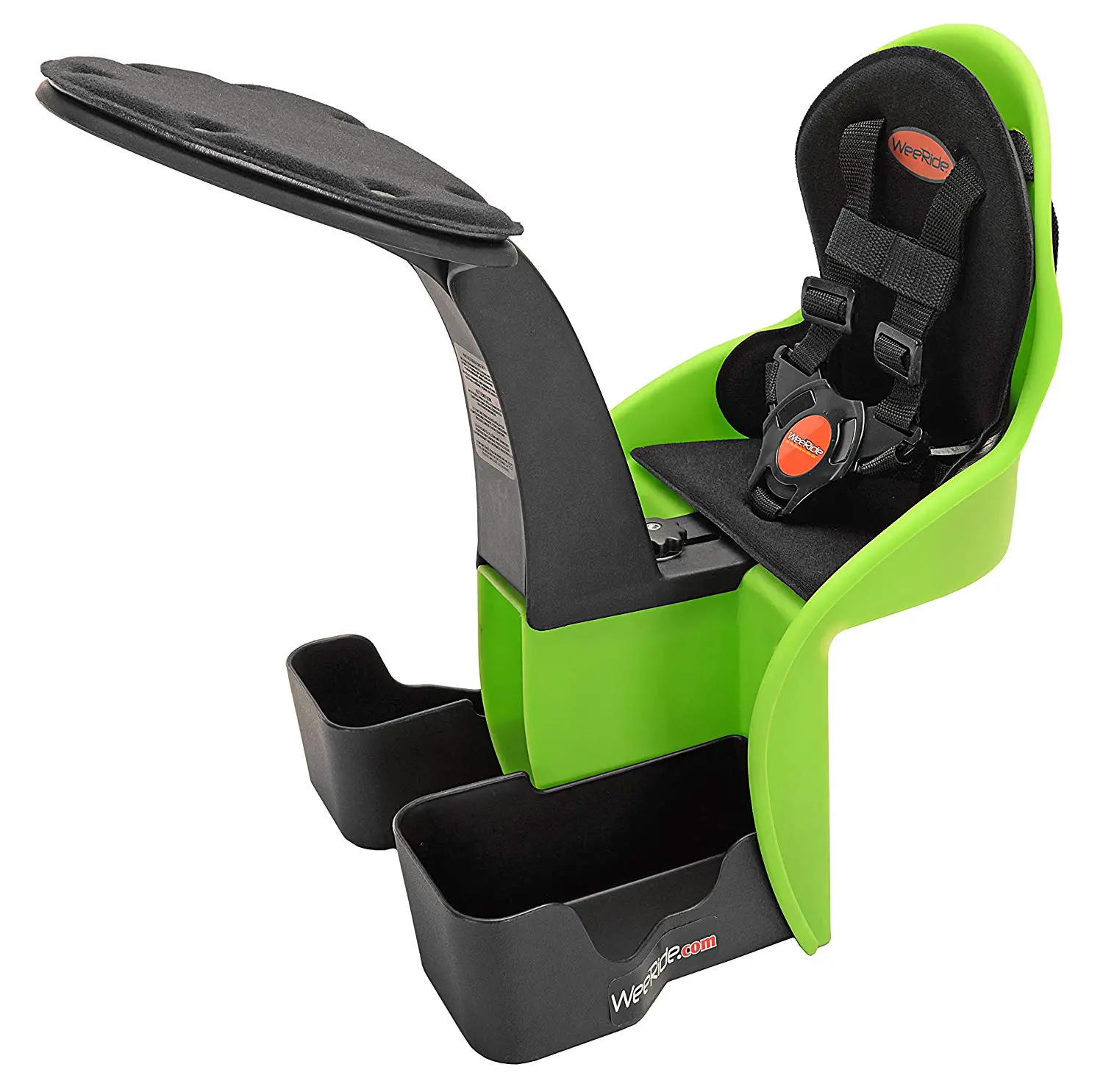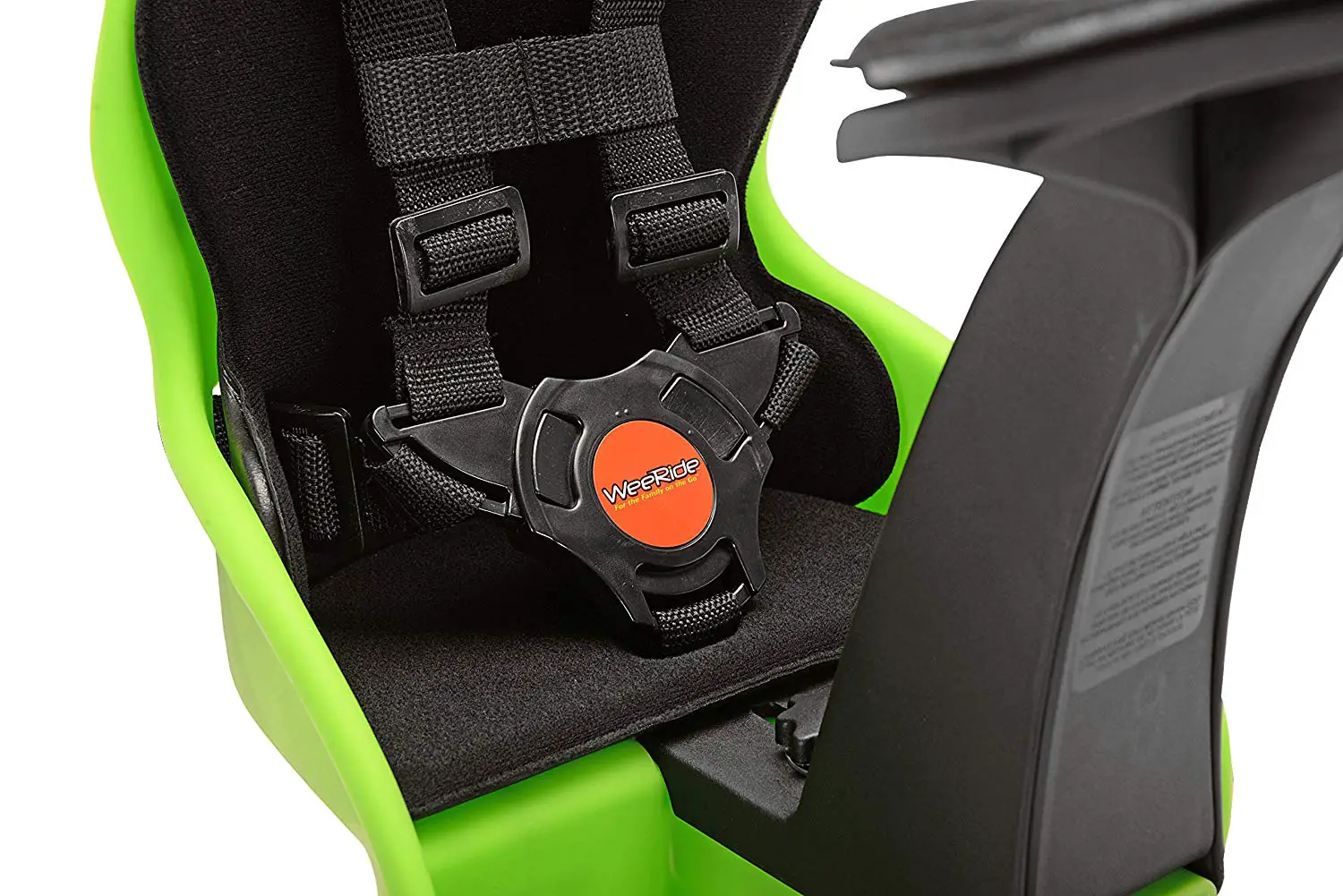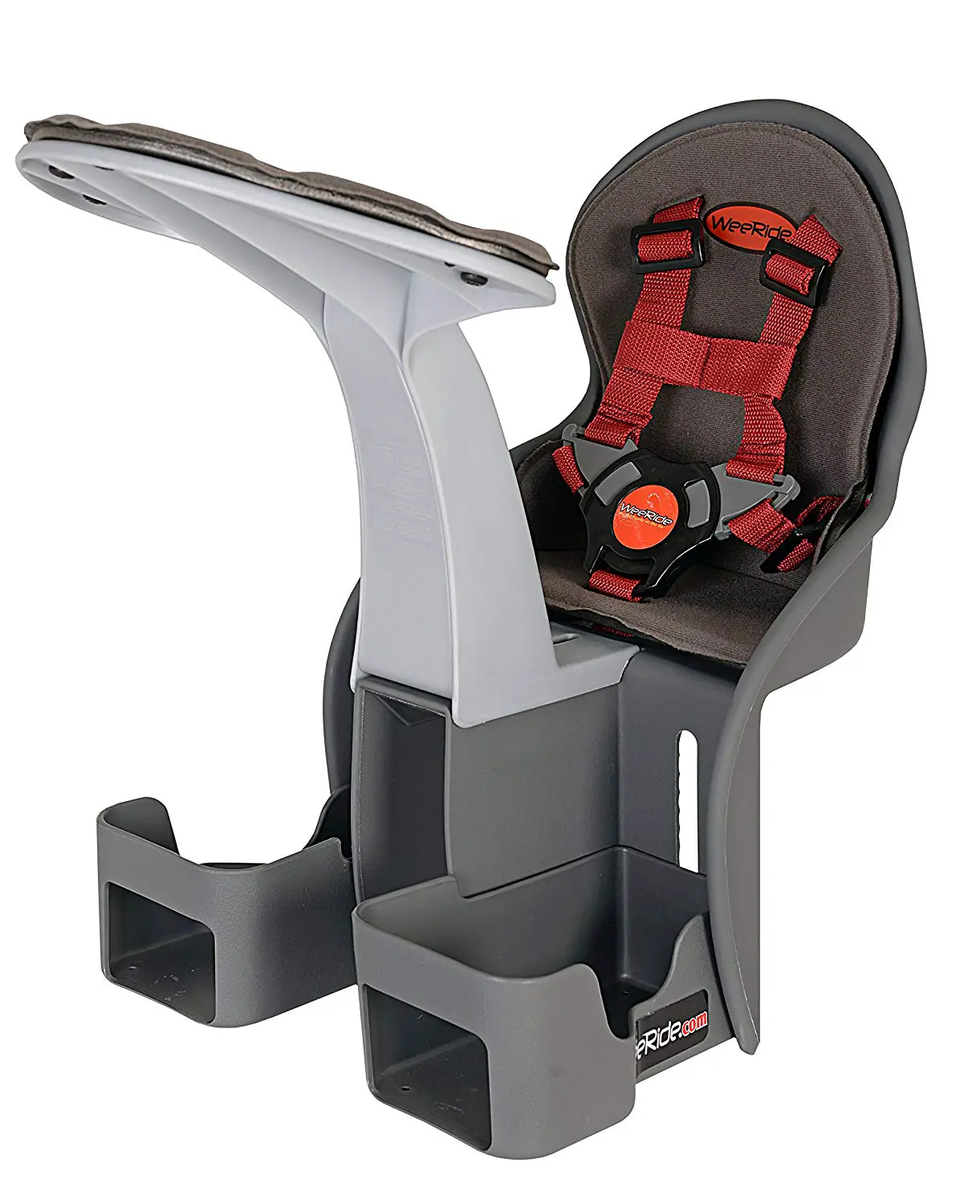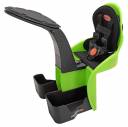WeeRide Kangaroo Bike Seat
We like
- Five-point safety harness keeps your child safe
- Foot cups are adjustable to add comfort to your child’s ride
- Your child’s weight helps balance your bike better
- You can engage with your child during the ride
- You can fully protect your child during the ride
- Your child can see the scenery around them without their vision being blocked
- Attaching the seat can be difficult and requires a lot of time
- The materials are not as sturdy as some may like
How it works
The WeeRide Kangaroo Bike Seat has been created for the parent who wants to give their child a better, safer ride on a bicycle. The seat is made to attach to the parent’s bicycle so parent and child can ride a bike together. What the WeeRide Kangaroo seat does that other child bike seats do not do, is that the WeeRide Kangaroo seat attaches to the front of the parent’s bicycle so that the child not only has a fully unobstructed view of the bike ride, but also the parent’s arms are fully around their child giving them extra protection and giving the parent a bigger peace-of-mind because they can fully see their child and assist them in the event of the bike falling or having to come to a sudden stop. The WeeRide Kangaroo Bike Seat has created mixed feelings in a lot of parents and there seems to be a huge divide in whether or not the seat is a good buy.
Design
WeeRide took the bike seat and placed it in the front of the bike putting the child in the parent’s direct line of sight and the position of the seat causes parents to be forced to put their arms around their child at all times ensuring that no matte
Safety
The seat comes with the standard five-point safety harness. The harness is just like the harnesses found in car seats and jumpers and strollers. Your child’s arms go through the straps of the harness and the harness is clipped into a buckle over your child’s belly. The two harness straps click into one buckle. The straps are then adjusted to your child’s comfort level and safety needs, and then the buckle is clipped into a second buckle that is located between the legs of your child. Once fully tightened, your child will be strapped securely into the bike seat.
The parent can then mount the bike. It is here that many parents are split on whether or not the bike seat is worth the purchase. The seat is very close to the parent’s body, hence it being called a kangaroo seat because the child sits as if they were in a pouch attached to your body. The parent’s stomach will come right up against the back of the seat. Many parents have found that riding the bike with the seat so close made for an uncomfortable ride, and those same parents found that there was very little space for their knees while they were pedaling the bike because the underside of the car seat is located just above the parent’s knees. Other parents have found this type of riding more beneficial because it made them feel they were completely surrounding their child at all times.
When the parent puts their hands on the handlebars of the bike, their arms will have to come completely around the body of their child. The parent’s forearms will be resting on the sides of the seat. When the parent is in this position while they are operating the bike, their child’s body will be sat directly in the parent’s lap, and many parents feel safer this way.
The seat itself comes with a steering wheel shaped extension that gives your child extra security by giving them something to hold on to while they are riding, and some children have even rested their heads on the extension and have fallen asleep.
It is the law to always put a bike helmet on your child while they are on a bicycle. Always have your child in a helmet.
Attaching the Seat To Your Bike
After opening the box, you will need an allen wrench and a screwdriver. You will see that the seat is separate from the handle bar that attaches to the seat for your child to hold on to. To attach the handlebar you have to flip the seat upside down and use a screw and washer system. Tighten the bolt with the screwdriver and allen wrench.
Next, you will need to attach the bracket to the frame of your bike. One bracket attaches to the front bar underneath your handle bars, and that can be tightened with the same bolt system mentioned above. Then, you attach the second bracket to the bar underneath the seat of your bike. In order to properly install that bracket, you will need to remove your seat and slide the bracket over the bar and down until it is flat against the frame of your bike. Tighten the bracket and replace and secure your seat.
Next, you will bolt the two brackets together.
Lastly, you will place the seat onto the bracket and fasten the seat tightly so that it won’t move. Once all of this has been done, you can then strap in your child and go for a ride on the bike.
The allen wrench, screwdriver, bolt system can be cumbersome, so it may help to have a second person there to help you out.
Materials
The seat and harness area are made out of fabric, which is soft and comfortable for your child. The foot cups are adjustable and some models have an open toe area so your child can move their feet while they are sitting. The materials are lightweight enough that they don’t weigh down the bike too much when your child is in the seat.
Age Range
Many parents have found that their child maxes out the weight requirement before four-years-old, and it should be noted that the weight factor must be taken into consideration when buying the seat. If you are a parent that does not ride their bike often, then this purchase may not be for you because you may not get the chance to fully enjoy the benefits of the seat if it won’t be used that often.
A Better Ride For Your Child
Parents have enjoyed being able to fully support their child during bike rides. Parents have their entire bodies around their child’s body, and in the event of a fall or a sudden stop, parents have been able to fully envelope their child and ensure their safety.
Parents have also been able to better communicate with their child during the ride when their child is sitting in front of them. Parents are able to talk into their child’s ear and hear their child’s response. Parents were better able to connect with their child and talk about what they see and what they are passing while they are on the bike. The position of the child on the front has created quality time for parents and their children.








